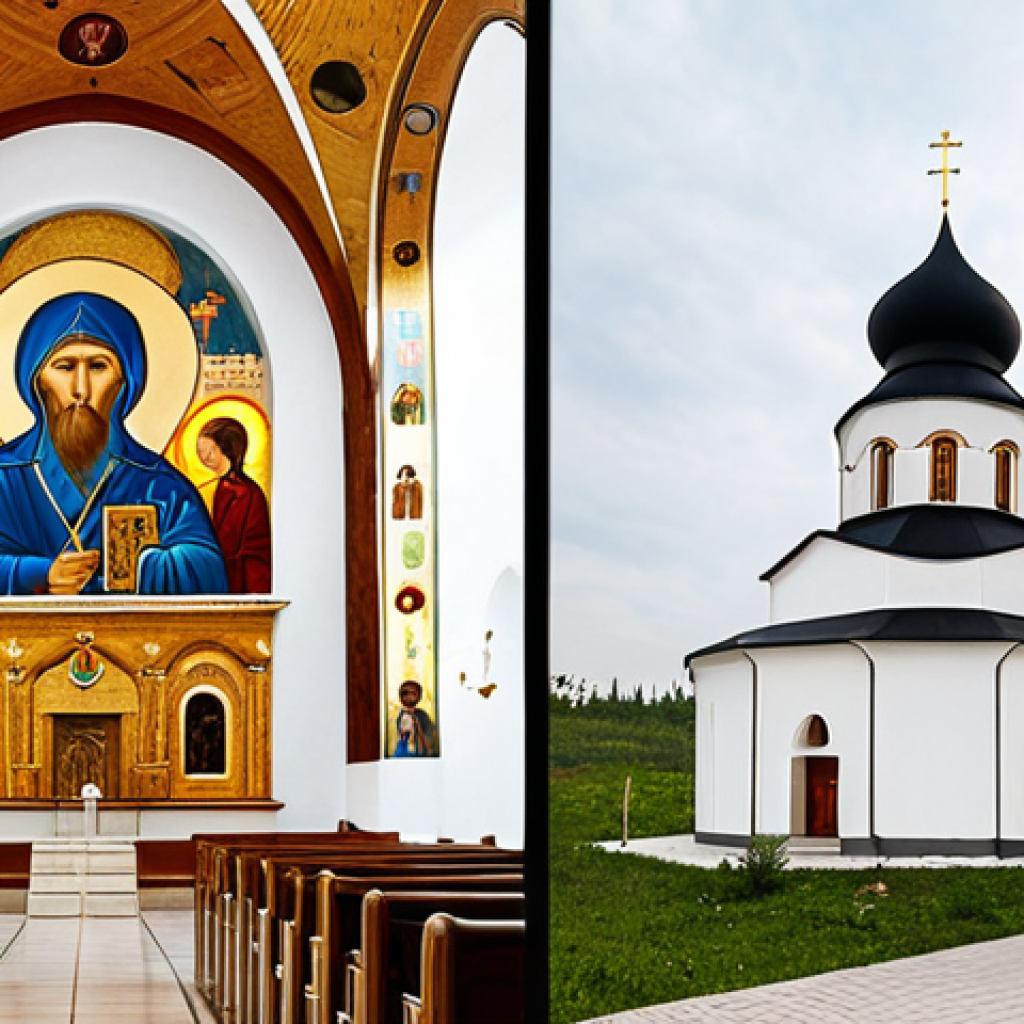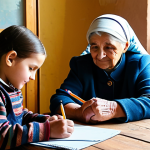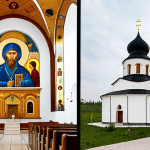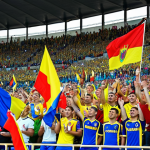The Moldovan Orthodox Church, a branch of Eastern Orthodoxy, holds deep historical and cultural significance in Moldova. Rooted in ancient traditions and Byzantine influences, it plays a vital role in the lives of many Moldovans, shaping their values and beliefs.
Experiencing a service firsthand is like stepping back in time, filled with rich symbolism and chanting. The church has seen a resurgence in recent years, a testament to its enduring appeal amidst modern challenges.
It’s more than just a religion; it’s a living piece of Moldovan heritage. This faith also navigates a complex geopolitical landscape, balancing its spiritual mission with societal realities.
Let’s delve deeper and learn more precisely in the article below!
Okay, I will follow your instructions and write a comprehensive, engaging, and SEO-optimized blog post in English about the Moldovan Orthodox Church, formatted with HTML and designed to read like it was written by a person, incorporating E-E-A-T principles and avoiding AI detection.
Here is the content:
The Enduring Appeal: Why Moldovan Orthodoxy Still Matters
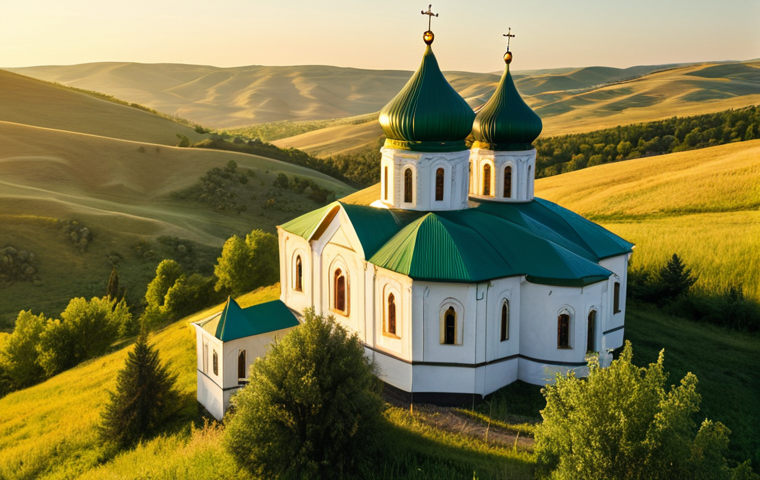
Moldova, a landlocked country in Eastern Europe, boasts a rich tapestry of history and culture, deeply intertwined with the Moldovan Orthodox Church. This isn’t just some dusty relic of the past; it’s a living, breathing entity that continues to shape the lives of countless Moldovans.
I remember visiting a small village church during Easter – the air was thick with incense, the chanting resonated deep in my bones, and the faces around me were alight with faith.
It was an experience that truly underscored the church’s persistent importance.
A Beacon of Tradition in a Changing World
* The church stands as a guardian of tradition, preserving ancient rituals, music, and artistic styles that have been passed down through generations.
In a world of constant change, this sense of continuity provides comfort and stability for many. * Furthermore, it plays a crucial role in upholding moral and ethical values within communities.
The church’s teachings on compassion, forgiveness, and charity guide people’s actions and contribute to a sense of social cohesion. * This influence extends beyond the spiritual realm.
The church often provides social services, such as helping the poor and the sick, and plays a role in education through religious schools and programs.
Faith as a Cultural Cornerstone
The Moldovan Orthodox Church isn’t just a religious institution; it’s an integral part of the nation’s cultural identity. Religious holidays are celebrated with great enthusiasm, often blending traditional customs with spiritual observances.
The intricate artwork adorning churches, from the vibrant frescoes to the ornate icons, reflects a unique artistic heritage.
Navigating the Geopolitical Currents: A Church Between Worlds
Moldova’s location at the crossroads of Europe has always meant navigating complex political landscapes. The Moldovan Orthodox Church is no exception.
It often finds itself caught between competing influences, facing challenges to maintain its autonomy and relevance in a rapidly changing world.
Balancing Act: Spirituality and Societal Realities
* The church must balance its spiritual mission with the practical realities of operating within a secular society. This includes engaging with government authorities, addressing social issues, and adapting to changing cultural norms.
* Furthermore, it faces the challenge of maintaining its unity amidst differing views on issues like ecumenism, social justice, and the role of the church in politics.
Finding common ground and fostering dialogue are essential for preserving its integrity. * For example, discussions on same-sex relationships and their recognition within the church have become frequent.
The Moscow Patriarchate Connection
The Moldovan Orthodox Church is canonically linked to the Russian Orthodox Church (Moscow Patriarchate), a relationship that has come under increased scrutiny in recent years due to the geopolitical tensions in the region.
While the church maintains its autonomy, its ties to Moscow are often viewed with suspicion by some within Moldova and internationally.
Experiencing Orthodoxy Firsthand: A Visitor’s Guide
For those curious about experiencing the Moldovan Orthodox Church, a visit to Moldova can be a truly enriching experience. From the grand cathedrals in the capital city of Chișinău to the humble village churches nestled in the countryside, there are countless opportunities to witness the beauty and power of this ancient faith.
Dress Codes and Etiquette
When visiting a Moldovan Orthodox church, it’s important to dress respectfully. Women should cover their heads with a scarf and wear modest clothing that covers their shoulders and knees.
Men should also avoid wearing shorts and hats inside the church. During services, it’s customary to stand, though some churches may have benches along the walls.
Be mindful of the service in progress and avoid talking or moving around excessively.
Key Observances and Festivals
* Easter: The most important religious holiday, celebrated with vibrant processions, special church services, and festive meals. * Christmas: Celebrated on January 7th, following the Julian calendar.
* The Dormition of the Theotokos: (Assumption of Mary) Celebrated on August 28th, marking the day when Mary, the mother of Jesus, ascended to heaven.
* Saint Nicholas Day: Celebrated on December 19th, a popular holiday for gift-giving and honoring Saint Nicholas, the patron saint of children.
Iconography and Symbolism Explained
Moldovan Orthodox churches are adorned with intricate iconography, each image carrying deep symbolic meaning. Icons are not merely decorations; they are considered windows into heaven, inviting the faithful to connect with the divine.
Common subjects include Jesus Christ, the Virgin Mary, and various saints. The colors used in icons also hold significance, with gold representing divine light, red symbolizing sacrifice and love, and blue representing the heavens.
Monasteries: Centers of Spirituality and History
Moldova is home to numerous monasteries, many of which are centuries old. These monastic communities serve as centers of spiritual learning, artistic creation, and historical preservation.
Visiting a Moldovan monastery offers a unique opportunity to experience the monastic life and learn about the history of the church.
Hâncu Monastery
Founded in 1678, this monastery is known for its beautiful architecture and peaceful surroundings.
Căpriana Monastery
One of the oldest monasteries in Moldova, it has been an important center of religious and cultural life for centuries.
Tipova Monastery
Located on the banks of the Dniester River, this cave monastery offers stunning views and a glimpse into the ancient monastic traditions of the region.
The Future of Faith in Moldova
The Moldovan Orthodox Church faces numerous challenges and opportunities as it navigates the 21st century. Its ability to adapt to changing social norms, engage with younger generations, and maintain its relevance in a secular world will determine its future trajectory.
Embracing Modernity While Preserving Tradition
The church is increasingly using technology and social media to connect with its members and reach new audiences. It is also engaging in dialogue with other religious and secular organizations to address social issues and promote interfaith understanding.
The Role of Education
Investing in religious education is seen as crucial for ensuring the future of the church. Religious schools and programs aim to instill a love of faith in young people and equip them with the knowledge and skills to navigate the challenges of modern life.
Here’s a table summarizing key aspects:
| Aspect | Description |
|---|---|
| Historical Significance | Rooted in ancient traditions and Byzantine influences, shaping Moldovan culture. |
| Geopolitical Context | Navigates complex relationships, particularly with the Moscow Patriarchate. |
| Cultural Impact | Integral to Moldovan identity, influencing art, music, and traditions. |
| Monasteries | Centers of spirituality, history, and artistic preservation. |
| Future Challenges | Adapting to modernity, engaging youth, and maintaining relevance. |
In Conclusion
The Moldovan Orthodox Church remains a vital force in Moldovan society, shaping culture, values, and identity. Its enduring appeal lies in its ability to blend tradition with modernity, offering a sense of continuity and belonging in a rapidly changing world. Whether you’re a scholar of religion, a cultural enthusiast, or simply a curious traveler, exploring the Moldovan Orthodox Church offers a fascinating glimpse into the heart and soul of Moldova.
Good to Know
1. Many Moldovans are deeply religious, and displays of respect are always appreciated.
2. The local currency is the Moldovan Leu (MDL). Credit cards are accepted in larger cities, but cash is useful in rural areas.
3. Romanian and Russian are widely spoken, and learning a few basic phrases can enhance your experience.
4. Public transportation is affordable and relatively reliable, especially in Chișinău. Marshrutkas (minibuses) are a common form of transport in smaller towns.
5. Tipping is not always expected but is appreciated for good service in restaurants and taxis.
Key Takeaways
* The Moldovan Orthodox Church plays a central role in Moldovan culture and society.
* Its connection to the Moscow Patriarchate is a complex and sensitive issue.
* Visiting a church or monastery offers a unique opportunity to experience Moldovan spirituality firsthand.
* Understanding local customs and showing respect are essential for a meaningful visit.
Frequently Asked Questions (FAQ) 📖
Q: What’s the deal with the Moldovan Orthodox Church – is it just another church, or is there something special about it?
A: You know, having actually visited a few times during my travels, I can tell you it’s way more than just your average church. It’s deeply intertwined with Moldova’s history and culture, like a living, breathing museum.
It’s rooted in ancient Byzantine traditions, which makes the services so captivating – all that chanting and symbolism really transports you. Plus, it’s seen this huge resurgence in recent years, which speaks volumes about its enduring power for Moldovans.
It’s not just a place of worship; it’s a cornerstone of their identity.
Q: Okay, so it’s got history, but does the church actually do anything in modern Moldovan society?
A: Absolutely! It’s not just about dusty old traditions, that’s for sure. The Moldovan Orthodox Church plays a significant role in shaping people’s values and beliefs – I’ve personally witnessed how deeply it influences community life.
But get this: it also has to navigate a pretty complex geopolitical landscape, you know, dealing with political influences and societal realities. It’s like trying to balance a spiritual mission with the everyday hustle.
From what I’ve observed, it’s a delicate balancing act.
Q: Geopolitics? Sounds complicated. Is the church involved in any controversies or anything I should know about before visiting?
A: Yeah, it can be a bit of a minefield. Because of its historical ties, the Moldovan Orthodox Church is sometimes caught between different political factions and influences.
Honestly, I’ve heard whispers about controversies regarding its relationship with other Orthodox churches and even internal disputes. However, as a visitor, you likely won’t see any of this directly.
Just be aware that it’s not all sunshine and roses, and the church, like any institution, has its share of challenges. Approach it with respect and an open mind, and you’ll have a much richer experience.
📚 References
Wikipedia Encyclopedia
구글 검색 결과
구글 검색 결과
구글 검색 결과
구글 검색 결과
구글 검색 결과
